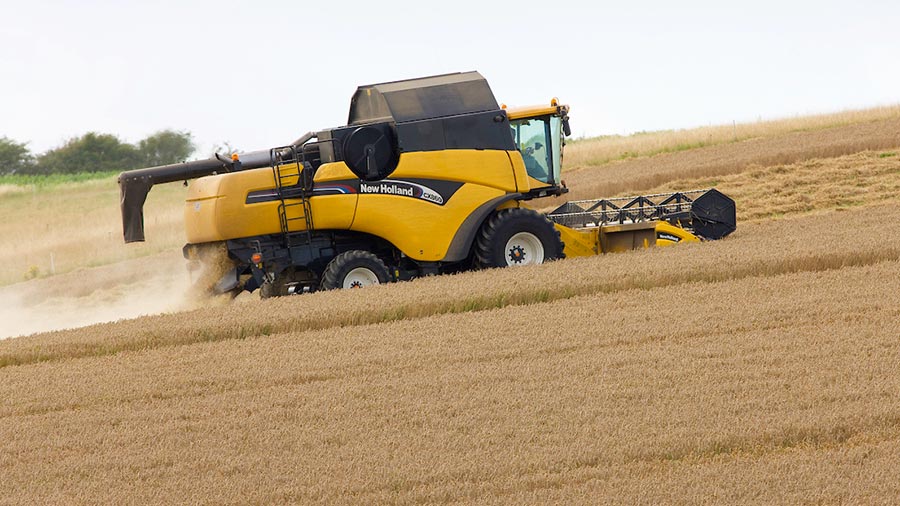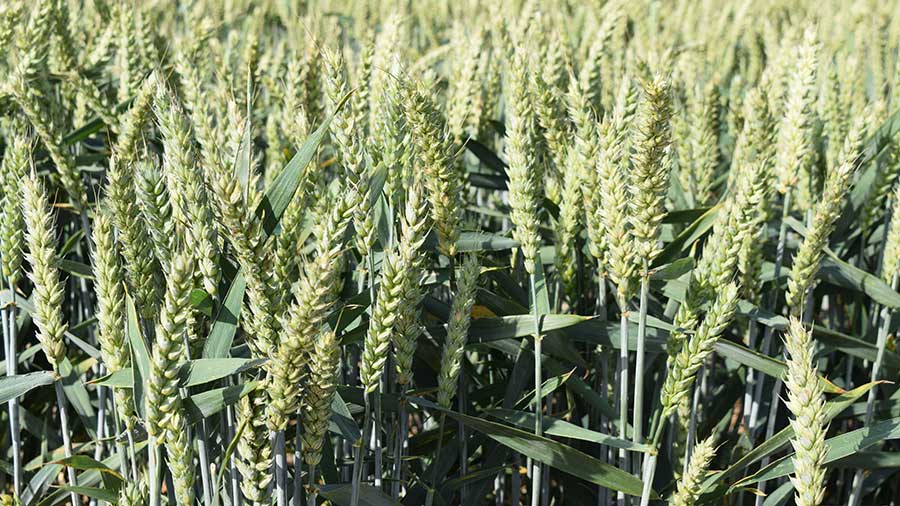How northern farmers could benefit from new soft winter wheat
 © Tim Scrivener
© Tim Scrivener A new soft Group 4 winter wheat variety that is significantly better for distilling than other variety choices should bring benefits to farmers as well as the end user.
Tipped for success in the North, newly recommended Swallow looks good for several reasons, believes David Waite, northern seed manager with Frontier Agriculture, who sees a place for the variety on farms where soft wheats are preferred.
See also: Graham and Extase tipped as wheats for the South West
“With new variety assessments, it’s straightforward as far as distilling is concerned,” he explains.
“They are looking for the highest alcohol yield that they can get from a tonne of wheat and no viscosity issues, as these can cause processing problems in the plant.”
With about half of Scottish wheat going for distilling, Swallow’s Recommended List distilling credentials were verified by the independent work of the Scotch Whisky Research Institute, which gave the variety a Good rating.
“Unfortunately, the distilling industry doesn’t pay a premium for the best alcohol yield,” reports Mr Waite. “So distilling varieties have to bring other merits too or farmers won’t grow them.”
That’s why, when choosing varieties for the North, Mr Waite has a shortlist of five key characteristics:
- Yield: Any new variety must be right up there on yield
- Lodging: Short, stiff varieties with good resistance to lodging are preferred
- Earliness: An important characteristic in the North with its longer growing season
- Grain quality: Both a decent specific weight and a higher hagberg are desirable, with a higher hagberg often indicating that a variety has some resistance to sprouting
- Disease resistance: Septoria is the main disease in the North so a good rating gives an advantage.
“When you consider these five, Swallow ticks the boxes. At 102% in the North, it has the required yield potential and it is the only variety on the Recommended List with a 9 for resistance to lodging with a plant growth regulator.

Swallow wheat © Senova
“It also has a 0 for ripening, making it one of the earlier varieties to mature and it has a good 5.7 rating for septoria. Its grain quality of a specific weight of 76.3kg/hl and a hagberg of 245 is good, too.”
He adds that there are just a handful of soft wheats that currently meet these five agronomic criteria.
Skyscraper is the current market leader, but it has a lower septoria rating than Swallow, while Saki also looks good, but is much later to mature.
“Saki has to be drilled early in Scotland to work well. Skyscraper isn’t a short, stiff type like Swallow, so it needs to be grown on the right sites.”
There are also soft Group 3 varieties which go into the distilling market, he acknowledges. “They don’t have the same distilling rating that Swallow has and only a couple of them are suitable for growing in Scotland.”
Frontier Agriculture will have some seed of Swallow for this coming autumn’s plantings, confirms Mr Waite.
“It’s a new variety in its first commercial year, so there won’t be an endless supply. Growers should take the opportunity to try it and see how it performs.”
Swallow was bred by John Blackman and is being marketed by Senova.
What makes a variety suitable for distilling?
Winter wheat varieties highlighted as suitable for distilling on the AHDB Recommended List have been through three years of extensive testing before the verdict on their end use is finalised.
Varieties found to be acceptable for distilling are classed as Good or Medium, depending on their alcohol yield potential, while those which have a low alcohol yield or high viscosity are given a Poor rating.
This rating system makes it easy for growers to identify the recommended varieties that are most suited to this specialist end market, all of which come from the soft Group 3 and 4 classifications.
While distillers prefer low nitrogen, soft endosperm varieties which offer processing efficiency and good alcohol yields, the eventual success of approved varieties also depends on them appealing to farmers.
For this reason, the best combination of attributes in any variety put forward for testing is high alcohol yields, relatively low viscosity and a robust agronomic package, believes James Brosnan, director at the Scotch Whisky Research Institute (SWRI), where the analysis work is carried out.
“The most successful varieties, whatever their end use, have the grower behind them too,” he says. “Just as with the other market sectors, a good distilling wheat has to be agronomically competitive as well as suiting the end user.”
Another important variety attribute, which is not found on the Recommended List, is consistency, he notes.
“When distilleries are in full-scale production, they need a consistent feedstock. This is important for efficient running and meeting round-the-clock production schedules.
“At the end of the day, distillers are seeking the best alcohol yield per tonne processed in the fastest unit time.”
Market acceptance
There is a lot of work done on market acceptance ahead of any variety’s recommendation, starting when the varieties are at the NL1 stage, when a “snapshot” of their suitability is gauged in both England and Scotland.
These results are combined with the following year’s NL2 findings, so that a report for the Recommended List committee can be prepared.
Once the varieties become RL candidates, they are tested across multiple trial sites before that information is passed back to the committee.
In determining alcohol yield, the SWRI must mimic the typical conditions in a distillery. The sample is cooked, mashed and then fermented, before it can be distilled and its alcohol yield measured.
“It’s a very labour-intensive process,” says Prof Brosnan. “What we’ve seen over the years is that differences in alcohol yield can be considerable between varieties, and that can have an influence on the efficient running of a distillery.”
While some distillers do specify preferred varieties, others will take a blend of varieties providing it meets the base specification of a specific weight above 72kg/hl, a maximum moisture content of 15% and a total nitrogen of less than 2%, he confirms.
Viscosity can be a significant issue in certain varieties and these are avoided by distillers due to the extra cleaning time needed in the plant. This year’s batch of varieties all passed this test, but there were differences in alcohol yield.
“Even a small difference in alcohol yield represents a potential large loss in spirit to the distiller. It’s a positive development when we find a variety that’s ahead of the others.”
On the Recommended List
Varieties are designated as Good, Medium or Poor, with the ratings appearing as Y, [Y] or – on the AHDB Recommended List.
- Good/Y Alcohol yield consistently equivalent to Good control varieties and above Medium control with no viscosity issues
- Medium/[Y] Alcohol yield equivalent to Medium control with no viscosity issues
- Poor/– Alcohol yield consistently below Medium control or with a very high residue viscosity

